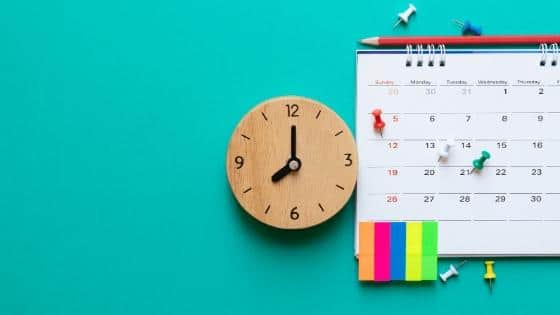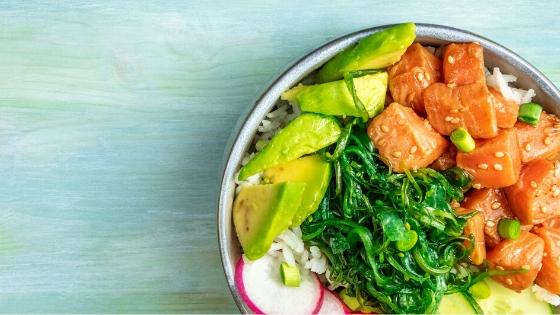Starting your day with an early cardio session is a great way to make sure your day can’t get any worse than it started.
The common belief is that you need to do lots of cardio to lose weight.
However, while cardio is a great tool for weight loss, it isn’t required.
If you have a busy schedule and can’t add too many cardio sessions, don’t worry, you can definitely lose fat without cardio.
Here’s what we’ll cover in this article:
Table of Contents

How to Lose Fat Without Cardio
1. Be in a Calorie Deficit
When it comes to fat loss, being in a calorie deficit is the most important component.
Being in a calorie deficit means that you burn more calories than you eat. This can be accomplished by eating less, exercising more, or a combination of both.
The number of calories needed to lose fat will vary from individuals, we all have different metabolisms, genetics, lifestyles, jobs, and activity levels.
For example, someone who has a desk job doesn’t need to eat as many calories as someone who has a more physical job.
A quick way to get an estimate is to multiply your body weight (in pounds) by 10 – 12. So a 200-pound person could eat between 2000 – 2400 calories per day.
If you’d like a more precise approach, you can explore my article on how to calculate your macros and TDEE.
2. Eat Enough Protein
Another way to lose fat naturally without cardio is to eat more protein.
I want to point out that fat loss is different from weight loss.
Weight loss includes anything that makes you weigh less, such as water retention, muscle loss, and fat loss.
In order to make sure that you’re maintaining lean muscle mass and stay toned, you need to eat enough protein.
Maintaining lean muscle mass is important for preventing your metabolism to slow too fast.
Aim to eat between 0.7 – 1.0 g per pound of bodyweight. The heavier you are, the closer to the lower end you should be.
For example, a 200 person should eat between 140 – 200 g of protein per day.
If you’re having problems eating enough protein, you could also supplement with whey protein powders.
Here’s an article I wrote about how to use whey protein for weight loss.
Start your journey to losing 10-21 pounds in just 21 days.
Get the free 21-Day Fat Loss Challenge training guide!

3. Lift Weight at Least Twice a Week
Lifting weights will burn more calories than simply doing cardio.
It will also boost your metabolism and help you maintain muscle mass to stay toned (because we don’t want flabby arms, right?).
So consider adding a few days of weight lifting per week.
Here’s how you can split your training depending on how many days you want to work out:
- 2 days/week: 2 full-body workouts.
- 3 days/week: 3 full-body workouts.
- 4 days/week: 2 upper body workouts and 2 lower body ones.
4. Stay More Active
If you don’t have time to do cardio (or just don’t want to), you can make small changes to your day to ensure that you burn a few more calories, such as:
- Park your car farther
- Take the stairs
- Take a walk every hour to get some water or use the restroom.
If you are a little more into tech, you can use an Apple watch or phone apps to track your steps. Try getting about 10 000 steps each day.
Here are some other great tips to lose weight without exercise.
5. Be Patient
Fat loss takes time, it’s definitely a journey with lots of ups and downs.
So don’t get desperate, taking the time to do things right will help you stay healthy and lose fat and actually keep it off.
Many people focus on quick approaches that often help them reach their goal weight fast, but leaves their metabolism in a bad spot, which leads to them gain even more weight than they had the first time.
Think about creating healthier habits instead of instant gratification.
Long-term sustainability is better than short-term satisfaction.
Is Cardio a Waste of Time for Weight Loss?
While cardio can surely help you lose weight, it might not be the most effective or time-efficient tool.
The amount and type of cardio you do will lead to different amounts of calories being burned.
However, it will take a lot of time and effort to burn enough calories to contribute to weight loss.
It May Not Burn as Many Calories as You Think
The number of calories you burn depends on the intensity and duration of the cardio session and your current body fat levels.
You can typically burn between 0.2 – 0.7 calories per 10 minutes per pound of bodyweight depending on the intensity of the session. (1)
Your height and type of cardio can also affect how many calories you burn, but these values are a good baseline to start from.
For example, a 200 lb person doing medium intensity cardio could burn about 80 calories every 10 minutes, so it would take the person 30 minutes to burn 240 calories.
Here’s a article you can explore about the difference between HIIT, MISS, and LISS cardio for fat loss.
Comparing Cardio With Diet
To put it into perspective, a serving of Oreos, 3 cookies, has 160 calories.
Therefore, it would take our sample person 20 minutes of medium intensity cardio to burn off 1 serving of Oreos.
This is why it’s difficult to lose weight without making changes to your eating habits. Think about it this way, you can’t out-exercise a bad diet.
What To Do
The key to losing weight is energy balance, this means that you need to burn more calories than you consume to lose weight.
While other things like stress, hormones, anxiety, metabolism, and genetics can affect weight loss, they often do so by increasing hunger, cravings, or affecting how your body processes foods (calories).
To lose weight, it’s recommended that you create a calorie deficit of 500 calories per day.
For example, if your maintenance calories (the calories you need to maintain your current weight) are 2000 calories, the calories you need to lose weight would be about 1500 calories.
This is not exact science, but it’s a good starting point.
How to create that 500 calorie deficit
- Burn 500 calories through cardio alone, that could take about 1 hour of medium intensity cardio each day.
- Eat 300 calories less each day and burn 200 calories through cardio.
- Eat 500 calories less each day and don’t do cardio at all.
Again, this is not an exact science, but it can give you an idea of how to tackle weight loss.
In order to achieve long-term weight loss results, you must find a sustainable way of maintaining a calorie deficit.
Instead of doing 2 hours of cardio every day to reach a calorie deficit, try reducing how much food you eat and then add only a few minutes of cardio.
If you need a little more guidance, you can check my article on whether you should lower calories or increase cardio.
There’s no need to torture yourself with a lot of cardio if you don’t like it.
Other Benefits of Cardio
Even if cardio isn’t the end-all-be-all of weight loss, you can add some sessions to increase your heart, lungs, and mental health.
Some people find walking a very efficient tool for reducing stress, which can help you snack less and reduce your calorie intake to lose weight.
Here are 5 tips to use walking for weight loss.
I hope you enjoyed this article on how to lose fat without cardio!
If you’re ready to start your weight loss journey, Avocadu’s 21-Day Fat Loss Challenge is the place to start!
This plan helps men and women lose 10-21 pounds in just 21 days and can be repeated as many times as you want.





